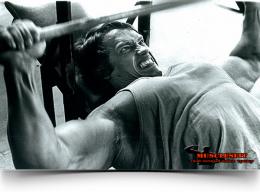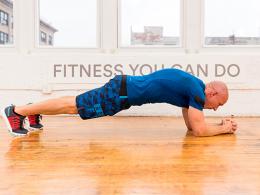Workout Load: Ways to Progress in Fitness
Success in fitness is achieved through a regular progression of loads. This is the main principle of any kind of training. There is only one way to force the body to change: to expose it from day to day to atypical external influences - such as it has never encountered before. If the load does not change from training to training or progresses insufficiently, the body quickly adapts and stops developing.
Increasing the load in strength fitness is not only an increase in training weights. Along with increasing the working weight, other methods of progression are also used. Their choice depends on the training conditions and the goals pursued. Among the main ways of varying the load, the following can be distinguished:
- Increase in projectile weight.
The scheme in this case is very simple. Suppose today an athlete presses a barbell weighing 50 kg, which means that at the next training session in the same exercise he must take a projectile several kilograms heavier - for example, 52 or 53.5 kg. This method works especially well for beginners. Fans of a healthy lifestyle, who have just begun to practice strength fitness, manage to steadily progress the weight of weights in the first months.
- Increase the number of repetitions.
Here, the effect on the body is enhanced not by lifting heavier weights, but by increasing the total load in the approach. The scheme is as follows: the athlete squeezes 50 kg in 6 repetitions and 3 sets, in the next workout he takes the same 50 kg, but already does 8 repetitions in 3 sets - as you can see, the working weight remained the same, but the muscles received a greater amount of load.
- Increasing the number of approaches.
The principle is the same: the working weight does not change, but the total amount of load in the exercise increases. This is achieved by adding one approach at a constant number of repetitions.
- Reducing rest between sets.
All other parameters of the exercise remain the same, only the duration of the pause between sets changes. It is reduced by about 30-60 seconds. And the shorter the pause between sets, the harder it is for the muscles.
- Complicated exercise.
Variations of some exercises differ from each other in the degree of difficulty. For example, hanging leg raises on the bar are easier to do with bent legs than with straight legs. And the deadlift with a contour bar is ahead of the deadlift in the racks in terms of complexity, but lags behind the classic deadlift.

How often to increase the load and what types of progression should be preferred? The athlete is not obliged by all means to increase the load at every workout. It should be increased as far as possible and always taking into account security measures. There is no general rule: at one stage, the load will progress constantly, and at another, no changes will occur for several workouts or even weeks. It all depends on many individual factors. The main thing is that there really is progress, and its pace can be different for different athletes and at different training stages.
The choice of progression methods is also individual. Methods No. 1 and 2 are the most popular. They are simple, convenient and effective. It is from them that it is worth repelling. There may be periods when exercises with a new, heavier weight will not be given. In this case, you will have to increase the number of repetitions from workout to workout, and only then take a new weight. Beginners are in a particularly advantageous position: for the time being, they freely progress both in weight and in the number of repetitions.

Aerobic activities include swimming, running, walking, cycling, aerobics and many other types of physical activity. Aerobic training, or cardio training, is used to lose weight, develop endurance and strengthen the cardiovascular system. Here, as well as in strength fitness, it is necessary to regularly progress the load. In terms of weight loss, the higher an athlete's fitness level, the more intensely they must train to burn the same amount of calories as before. In other words, a fat, undertrained person burns more calories for the same amount of exercise than a lean person with better physical fitness. The body gets used to external influences, and in order to achieve the desired response, more and more efforts have to be made.
The main parameter by which the magnitude of the load in aerobic training is judged is the heart rate (HR). The intensity of fitness training is considered optimal if the athlete works in the desired heart rate range. The allowable heart rate range is calculated for each person individually. First, the maximum allowable heart rate is found, and this number already serves as a starting point when looking for working heart rate values. Endurance fitness training should take place in the aerobic zone of 60-85% of the maximum heart rate. Moreover, for effective weight loss, the range of 60-75% of the maximum heart rate is considered the most optimal. Thus, to get real benefits from aerobic fitness training, a healthy lifestyle fan must find his range, purchase a heart rate monitor and track his presence within the boundaries of the desired zone.
It is not difficult for a poorly trained person to achieve the desired level of load. The pulse jumps rapidly and even goes beyond the permissible limits. It is much more difficult to stay in the desired range for a long time - 40-60 minutes. With low physical fitness, the trained body begins to experience a lack of oxygen. Shortness of breath appears, fatigue quickly sets in. If you can’t stay in the desired zone, it’s better not to overload the heart muscle, but to reduce the intensity of the workout. A regularly trained athlete gradually adapts to the load. His heart rate at the same speed of work becomes lower. And in order to stay in the allowable zone, the athlete has to increase the pace: pedal faster, increase the speed of the treadmill, etc. Both power and aerobic fitness obey the same principle of gradual and regular progress of loads. This is the key to successful training. But here a balance is needed: while making progress in training, try not to harm your health.






